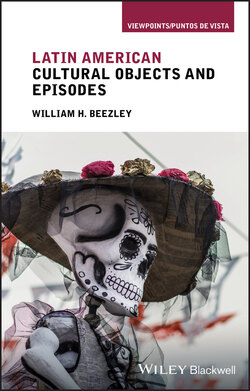Читать книгу Latin American Cultural Objects and Episodes - William H. Beezley - Страница 7
ОглавлениеCall…cry…shout…yell “Ooo‐wa‐ooo‐aaooaaooaa‐ooo!” or “Taaar‐maan‐ganiii”
The call to action, the cry for attention, the shout for followers, or the yell for adventure – the expression of much of Latin America’s history comes through these declarations of political battles, alerts to domestic or foreign dangers, rallies of like‐minded individuals, and introductions of the first step to challenges. These outcries also signal identification of real and imagined communities, built through the appropriation of cultural items in Latin America and the mass media creation of cosmopolitan popular culture. Calls, or gritos, serve a major role in Latin American, for example Mexican, politics and culture. The best known surely is Padre Miguel Hidalgo’s “Grito de Dolores” that in 1810 launched the struggle for Mexican independence. The Catholic rebellion beginning in 1927 against the Mexican revolution leaders featured the iconic cry, “¡Viva Cristo Rey!” Moreover, groups and institutions adopt yells that identify those who shout, such as the National Autonomous University of Mexico students who chant approval, “¡Goya!, ¡Goya!” Searching out these cries for different organizations and different Latin American countries provides an intriguing scavenger hunt that reveals a different dimension of both global and national cultures.
No shout, sounding across Latin America and most of the rest of the globe’s comic strip pages, radio airwaves, and movie soundtracks, has ever equaled Tarzan’s signature roar. When Edgar Rice Burroughs created his fictional hero slightly over a century ago, he described the shout as “the victory cry of the bull ape.” Whatever it sounded like, it called together a global following for the syndicated comic strip that by 1935 appeared in 278 newspapers worldwide. When Tarzan appeared in movies and on radio, fans heard it for the first time. The initial version premiered in the partial sound movie serial Tarzan the Tiger (1929) as a “Nee‐Yah!” noise and then on the first radio serial in 1932 James Pierce as Tarzan yelled something like “Taaar‐maan‐ganiii” (still common in Cuba and other parts of Latin America) that, according to the novels, meant in simian language “White Ape.” For the first full sound movie, the producer wanted a distinctive cry that fans across the Americas and the world could recognize. The movie shout succeeded so well it was adopted and used by young Tarzan fans, called Tarzanistas throughout Latin America.
The newspaper comic strip, radio programs, and subtitled movies attracted great popularity. In Argentina, it resulted in the writing and publication of el nieto de TARZAN (the grandson of Tarzan), by an apocryphal author in 1932 and in 1950 the filming of the unauthorized el Hijo de Tarzan (the son of Tarzan) with Eugene Burns, Johny Colloug, and Mae Comont. Argentina’s first International Comics Convention held in 1968 at the Torcuarto Di Tella Institute featured as its International Guest of Honor Burne Hogarth, the illustrator of the comic strip “Tarzan.” A later parody was done in one of Latin America’s most famous comic strips, Chile’s “El Condorito,” using a Tarzan character called “Condorzán.
”The prominence of the yell suggested using a button like a musical Hallmark greeting card in this prologue. Such a button proved to be prohibitively expensive for the book, but anyone can go to this link: https://www.mentalfloss.com/article/12328/disputed‐history‐tarzan‐yell to hear it1 or search videos of Tarzan’s yell in any search engine. Moreover, the objects in this book serve as yells, calling for action, celebration, or adventure expressed in episodes that are linked, however thinly, to the things in each chapter title.
Note
1 1 Bill Demain, “The Disputed History of the Tarzan Yell” (August 22, 2012).
